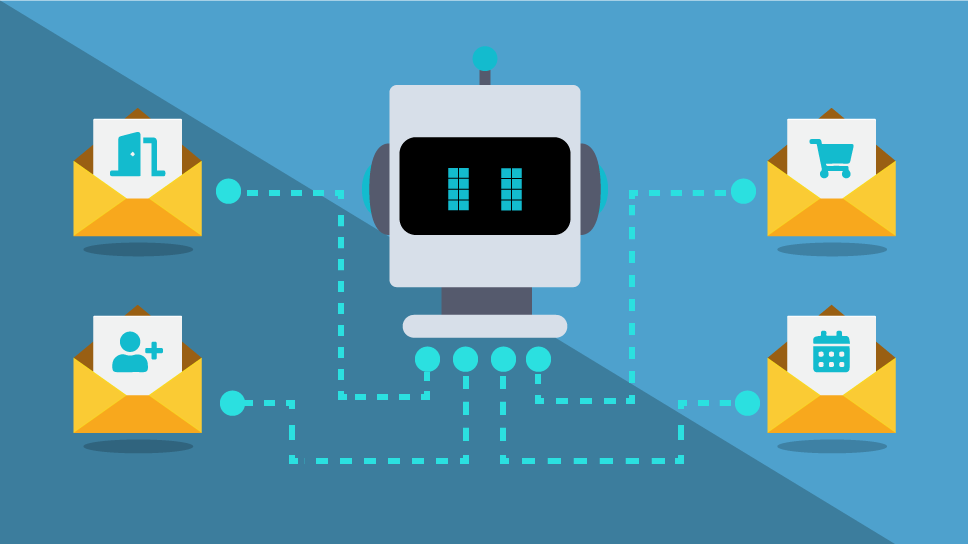Affiliate marketing is an excellent way to monetize your content by recommending products or services you genuinely believe in. However, simply throwing affiliate links out there isn’t enough. To maximize your conversions, you need a smart strategy that nurtures leads and addresses their needs. This is where autoresponders come in.
Understanding Autoresponders: A Newcomer's Guide
If you’re new to email marketing, you might be wondering what an autoresponder is. Simply put, an autoresponder is a series of pre-written emails that are automatically sent to your subscribers based on their actions or specific triggers. For example, when someone subscribes to your newsletter, they might receive a welcome email followed by a series of informative emails.
Why Use Autoresponders in Affiliate Marketing?
Autoresponders are a powerful tool for affiliate marketers because they allow you to engage with your audience in a personalized way, build trust, and guide them through the buying journey. Here’s a deeper look into how you can use autoresponders effectively.
Tailored Follow-Ups for Every Subscriber
Autoresponders can help you create targeted messages for different segments of your audience, ensuring that each subscriber receives relevant content. Here’s how you can tailor your follow-ups for both non-clickers and clickers.
Engaging the Non-Clickers
Not everyone will click on your affiliate links the first time around. This doesn’t mean they aren’t interested; they might just need more information or a gentle reminder. Here are some strategies for engaging non-clickers:
- Acknowledge their lack of initial interest: Start by recognizing that they didn’t click your link. You could say something like, “We noticed you haven’t checked out [product name] yet.”
- Provide additional information: Offer more details about the product, such as its benefits, features, or how it can solve a problem they might have.
- Showcase positive customer reviews: Share testimonials or success stories from other users.
- Offer a limited-time discount: Sometimes, a small incentive like a discount can motivate non-clickers to take action.
Nurturing the Clickers
For those who do click your affiliate link, an autoresponder expressing gratitude is a great first step. This helps to build a positive relationship with your subscribers. Here’s how you can nurture clickers:
- Thank them for their interest: A simple “Thank you for checking out [product name]” can go a long way.
- Gauge their interest: Ask a question like, “Did you find [product name] helpful?” This invites them to engage and share their thoughts.
- Offer additional support: Let them know you’re available to answer any questions they might have about the product. This establishes you as a helpful resource and builds trust.

Choosing the Right Email Marketing Platform
To effectively implement autoresponders and optimize your affiliate marketing strategy, choosing the right email marketing platform is crucial. Here are some features to look for:
- Robust Automation Features
A platform with user-friendly automation tools allows you to easily create targeted email sequences for different subscriber segments. Automation helps you send the right message to the right person at the right time without manual effort.
- Scalability
As your audience grows, your email marketing needs will too. Choose a platform that can scale to accommodate your expanding subscriber base. Look for one that allows you to manage larger lists and more complex campaigns without compromising performance.
- Reliable Deliverability
Ensure your emails reach their intended recipients. Look for a platform with a strong reputation for high deliverability rates. This means your emails are more likely to end up in the inbox rather than the spam folder.
- Analytics and Reporting
Track your campaign performance and make data-driven decisions. Choose a platform that provides insightful analytics to measure the effectiveness of your autoresponders. This helps you understand what’s working and what needs improvement.
Real-Life Examples of Autoresponders in Action
To truly appreciate the power of autoresponders, let’s look at some real-life examples of how businesses have successfully implemented them to boost their affiliate marketing efforts.
Case Study 1: Pat Flynn from Smart Passive Income
Pat Flynn, a renowned affiliate marketer and the founder of Smart Passive Income, uses autoresponders to great effect. He has built a series of automated emails that provide immense value to his subscribers, leading them through a journey that builds trust and showcases the benefits of the products he promotes. By delivering valuable content consistently, Flynn has managed to convert many of his subscribers into loyal customers.
Case Study 2: Michelle Schroeder-Gardner from Making Sense of Cents
Michelle Schroeder-Gardner, the blogger behind Making Sense of Cents, has also leveraged autoresponders to enhance her affiliate marketing strategy. She sends out a welcome series to new subscribers that includes personal stories, valuable tips, and, strategically, affiliate product recommendations. Her authentic approach and well-crafted autoresponders have helped her build a strong relationship with her audience, leading to higher conversions.
Enhancing Engagement Through Personalization
One of the main benefits of autoresponders is the ability to personalize your communication with subscribers. Personalized emails can significantly boost engagement and conversions. According to a study by Experian, personalized emails deliver six times higher transaction rates than non-personalized emails.
Crafting Personalized Content
When creating your autoresponder sequences, consider the following tips for crafting personalized content:
- Use the subscriber’s name: Addressing your subscribers by their name can make your emails feel more personal and less like mass communication.
- Segment your audience: Group your subscribers based on their behavior, preferences, and demographics. This allows you to send more relevant content.
- Tailor your recommendations: Recommend products or services based on the subscriber’s past behavior and interests.
Building Trust Through Authenticity
Building trust is crucial in affiliate marketing. Autoresponders can help you establish and maintain trust with your audience by delivering consistent and valuable content. Be transparent about your affiliate relationships and focus on promoting products you genuinely believe in. As Pat Flynn says, “Your earnings as an affiliate come from the trust you’ve built with your audience. Always be honest and only promote products you can stand behind.”
Step-by-Step Guide to Setting Up Your First Autoresponder Series
For newcomers, setting up an autoresponder series might seem daunting. Here’s a step-by-step guide to get you started:
Step 1: Choose Your Email Marketing Platform
Select a platform that fits your needs. Some popular options include Mailchimp, ConvertKit, Contact Consumers and AWeber. Look for one that offers the features we discussed earlier.
Step 2: Define Your Goals
Determine what you want to achieve with your autoresponder series. Are you looking to build trust, provide value, or directly promote affiliate products? Having clear goals will guide your content creation.
For example, if your goal is to build trust, focus on sharing personal stories, customer testimonials, and behind-the-scenes insights that humanize your brand. If you aim to provide value, consider offering educational content, useful tips, or exclusive resources that address your audience’s pain points. On the other hand, if your primary objective is to promote affiliate products, create content that highlights the benefits, features, and unique selling points of those products, along with compelling calls to action.
Step 3: Segment Your Audience
Group your subscribers based on their behavior and preferences. For example, you might have separate segments for new subscribers, non-clickers, and clickers.
Step 4: Create Your Email Sequence
Write a series of emails tailored to each segment. Ensure each email provides value, addresses potential objections, and includes a call to action. Here’s a simple sequence for non-clickers:
- Email 1: Acknowledgment and Additional Information: “We noticed you haven’t checked out [product name] yet. Here’s more information about how it can help you…”
- Email 2: Customer Reviews and Testimonials: “Still unsure? Here’s what other users are saying about [product name]…”
- Email 3: Limited-Time Discount: “We don’t want you to miss out! Use this discount code to get [product name] at a reduced price…”
Step 5: Set Up Automation
Use your email marketing platform’s automation tools to set up your autoresponder series. Define the triggers that will send each email, such as a subscriber’s signup date or lack of action on a previous email.
Triggers can also include actions like clicking a specific link, downloading a resource, or making a purchase. By carefully setting up these triggers, you can ensure that your emails are sent at the most opportune times, increasing the likelihood of engagement.
Step 6: Monitor and Optimize
Once your autoresponder series is live, regularly monitor its performance using your platform’s analytics tools. Look at open rates, click-through rates, and conversions. Use this data to tweak your emails and improve your results.
Customizing Your Automation
Welcome Series: Create a welcome series that is triggered when someone subscribes to your list. This can include a warm welcome message, an introduction to your brand, and an overview of what they can expect from your emails. Gradually, you can provide them with valuable content and start introducing your affiliate products.
Behavior-Based Triggers: Set up triggers based on subscriber behavior. For example, if a subscriber clicks on a link to learn more about a specific product, you can send follow-up emails with additional information, testimonials, and related offers.
Re-engagement Campaigns: Identify subscribers who haven’t interacted with your emails in a while and set up re-engagement campaigns. Send them a friendly reminder, offer an incentive to re-engage, or ask for feedback to understand why they’ve been inactive.
Purchasing Triggers: When a subscriber makes a purchase through one of your affiliate links, follow up with a thank-you email. You can also send additional emails suggesting complementary products or asking for a review.
Final Thoughts
Autoresponders are a powerful tool in the arsenal of affiliate marketers. They enable you to engage with your audience in a personalized and meaningful way, fostering trust and driving conversions. By carefully crafting your autoresponder sequences and leveraging the right email marketing platform, you can significantly enhance your affiliate marketing strategy.
To quote Seth Godin, a renowned marketer, “People do not buy goods and services. They buy relations, stories, and magic.” Autoresponders help you build those relationships and tell your story, creating the magic that converts leads into loyal customers.




